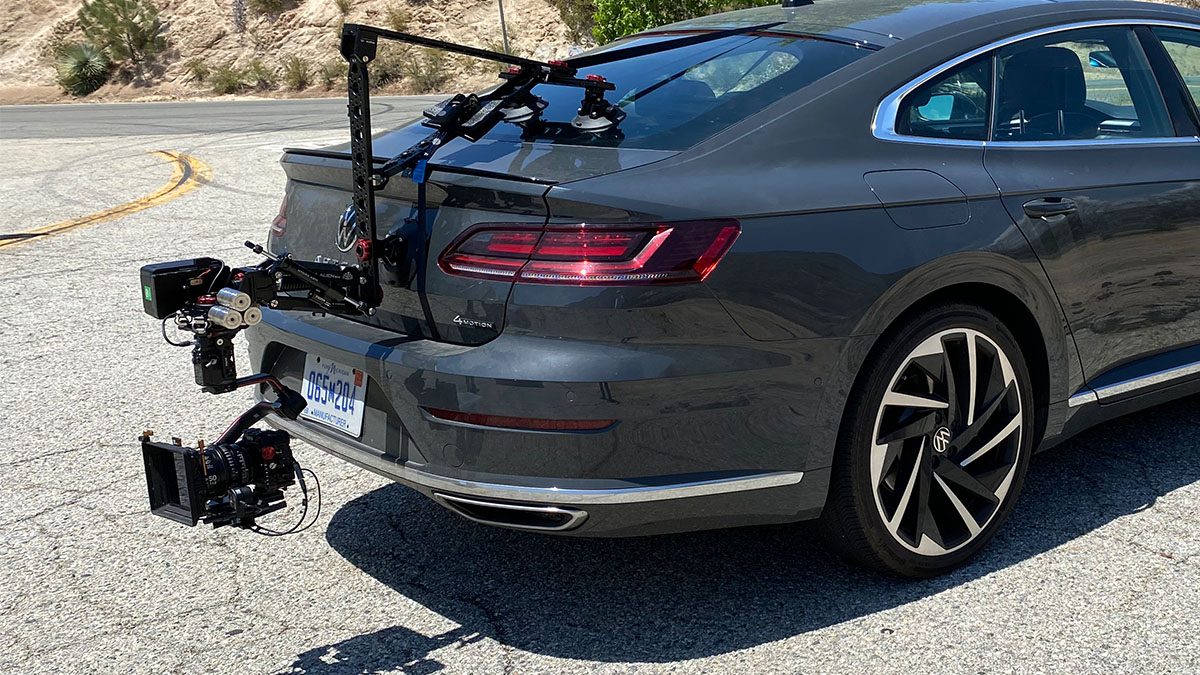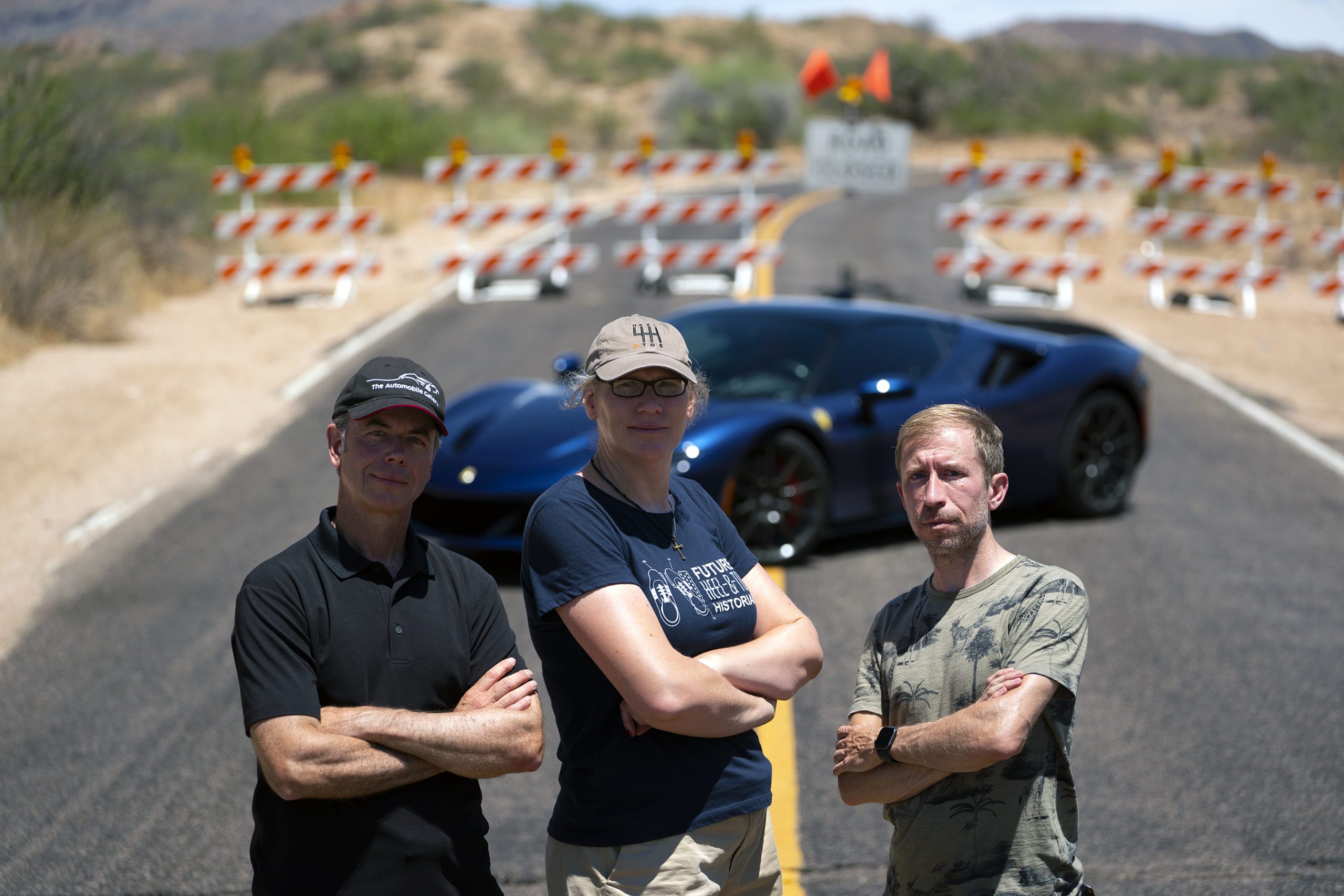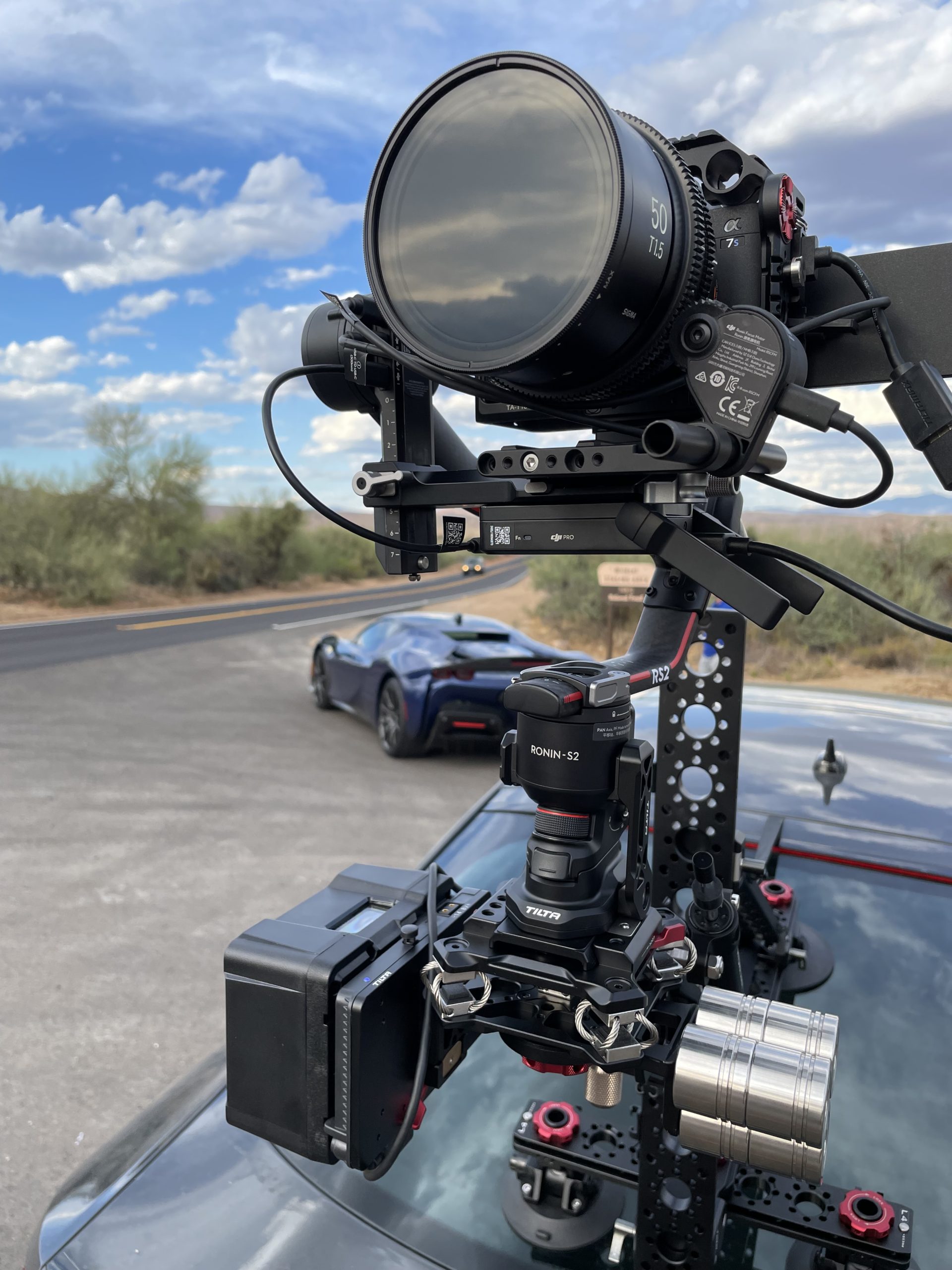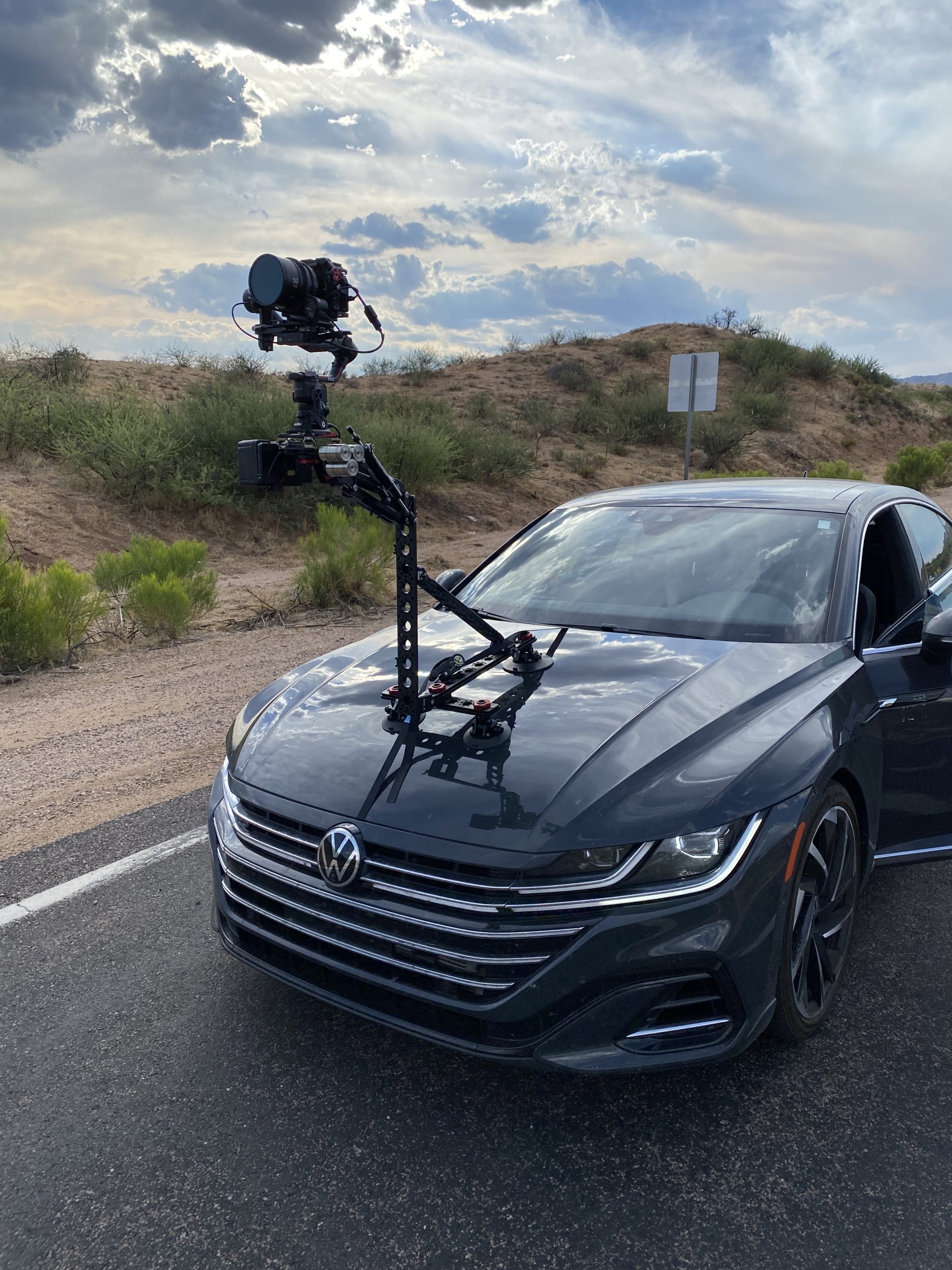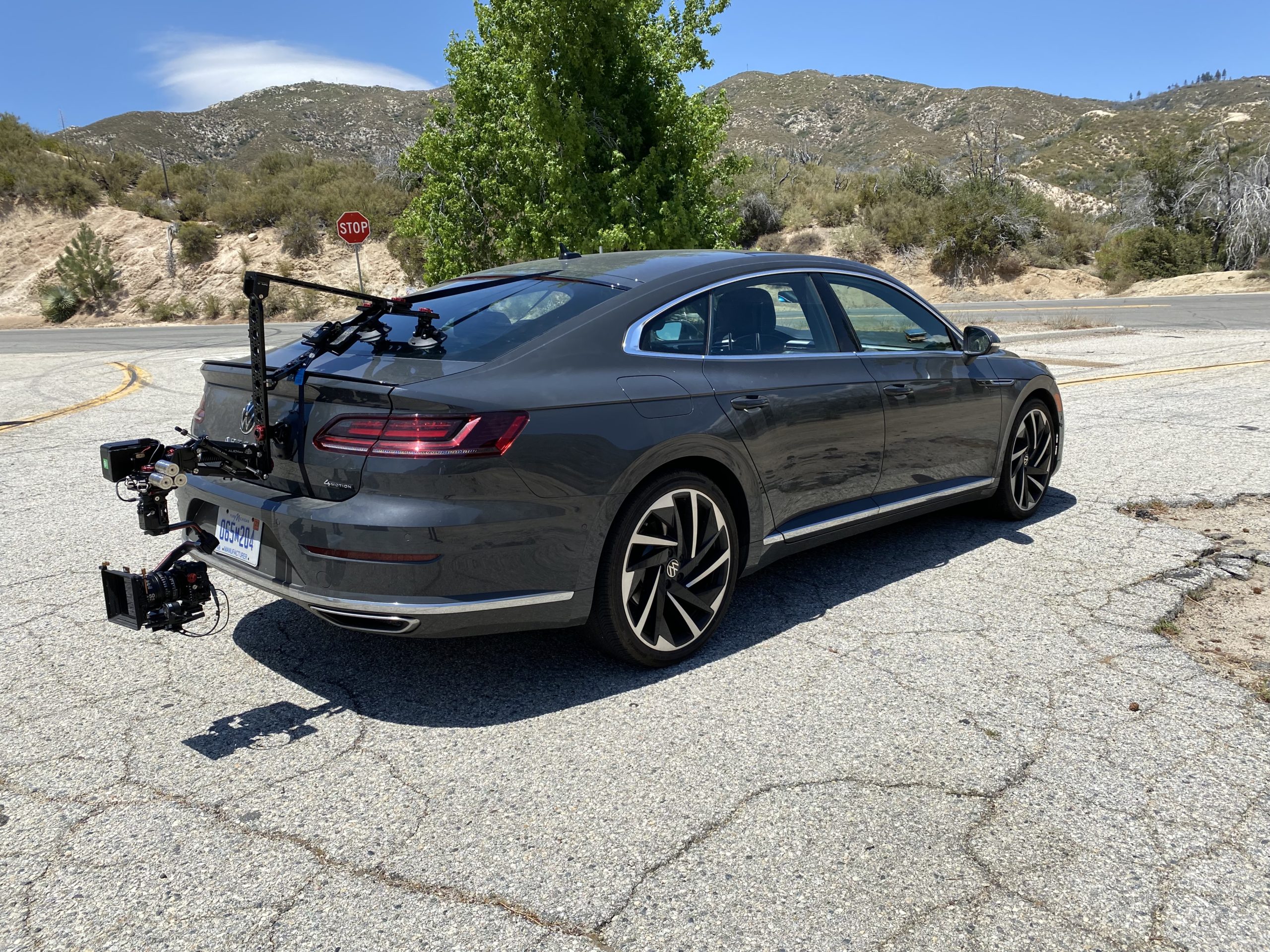You don’t have to own a Ferrari or Lamborghini to appreciate the thrill of driving a high performance automobile. The TV series Auto Exotica is the perfect antidote for sports-car lovers who don’t have hundreds of thousands of dollars to spend on their passion. It’s the closest thing to being there thanks to the expertise and real-world experiences of the show’s hosts as they put these exotic vehicles through their paces. Season 2 of this engaging and exciting TV series has just launched on PBS and Season 3 is now being filmed so tune in — you won’t be disappointed!
From Magazine to TV series
To fully appreciate the genesis of this series, we should look back to the mid-1990s when Ferrari released the 550 Maranello. Sports car aficionado Jennifer Jensen paged through copies of the ten automotive magazines she subscribed to looking for information about this exciting new car. “I wanted to know every little tidbit,” she recalled. Instead, she found the same “regurgitated press kit” information and unimaginative, photographs taken from the same angles. Disappointed and frustrated, Jensen canceled eight of the magazine subscriptions and made a list of ten questions that she wanted to see answered in a car review. She posted her wish list on a friend’s site and within 30 days, she had more than 10,000 responses; 97% of which wanted the same things Jensen did: “more and better photographs and a seat-of-the-pants emotive review” rather than only “baseball card” facts. It was Jensen’s dream to launch an automotive magazine that would check all the boxes on that wish list.
Jensen realized that dream in 2009 with the first issue of Auto Exotica as a quarterly print automotive magazine covering high performance and sports cars. In the time following the magazine’s launch, Jensen and her production company, NextJen Studios, in conjunction with FourPoints Television Productions, successfully produced and directed several TV series documentaries including The Aviators and The RVers. The former, which began airing in 2010 on PBS, boasted a Nielsen rating of 9.3 million viewers a week in its first season. Thanks to the former series’ success, Jensen was approached to do an automotive TV series and spun Auto Exotica into a TV show, a nice complement to the magazine.
With a very small crew, Jensen took on multiple roles for Season 1 — she was one of three hosts, did the voiceovers, set up sound, produced and directed, operated a camera, worked on post-production. And those are only a few of the hats she wore. The 8-episode series was “successful but not in the way I wanted,” Jensen says. “Season 1 is a lot of my voice off-camera directing what the viewer sees. I want what we say in the car to be what we’re telling the audience and only use the voiceover to bridge the gap if we missed something or if conditions in the wild didn’t allow for a walkaround. In those cases, we might have voiceover to support the story.”
And that’s exactly what she did for Season 2. While other car shows are scripted, “this is more docu-reality than scripted,” Jensen explains. “The post production editor synced all the in-car audio with our drives and we created the stories from there,” resulting in a natural (and fun) flow of comments and dialogue from the three hosts — sometimes with a single driver; other times with all three hosts in the car. “You’re getting our genuine emotions and reactions,” she says. And while they report the specs, it’s in relation to “how that affects the driving experience” and not just a “baseball card” list of data.
Bring on the Cars!
Which cars get reviewed depends on a number of factors. To start, Jensen puts together her “dream list” while keeping in mind what’s hot and the need to present a diverse collection. Season 2 was supposed to come out in 2020 but due to the pandemic there was a gap and they weren’t able to get the hyper cars they were set to include. While episode schedules look good on paper, the team is quick on their feet to change things up when necessary. For example, they anticipated a half-episode for the all-electric car segment but, rather than skimping on coverage, they gave it a full episode. And they needed two full episodes to cover the new mid-engine C8 Corvette. The latter includes a road trip to Bowling Green, Kentucky where the cars are manufactured, a walk-through of the Corvette Museum and some time on the track there.
The bottom line, of course, is availability of the cars on Jensen’s wish list. And filming locations often depend on where the cars are accessible. It’s not unheard of for them to cover six cars in two weeks with a grueling, 20-hour-a-day schedule, if it means reviewing the cars they think viewers want to see.
Each of the hosts does their homework before setting foot in the automobile so they’re prepared to deliver knowledgeable comments and responses to the driving experience. There might be a cheat sheet taped to a window out of sight to ensure accurate reporting but mostly you get the hosts’ first hand, no-holds-barred reactions and points-of-view.
Perhaps the most fun episode, with the most spontaneous reactions, is Season 2’s tank episode. Yes, you read that right! Jensen and her colleagues actually drive several military tanks. We don’t want to spoil any surprises but it’s a unique and really cool episode. (Keep in mind that Jensen managed to fit her 6’2″ frame into the cramped interior of a tank and DP, Ethan VerKullen — who is taller than Jensen — managed to bend like Gumby to place cameras in very tight spaces.) Of course, there are more than enough high performance cars as well to satisfy viewers’ need for speed in Season 2 such as the Lamborghini Huracan RWD Spyder, McLaren’s 620R and GT, and even the back-to-basics Lotus Evora GT. There are a few more surprises with some all-electric vehicles and a hybrid hyper car in this season as well.
How Did They Get Those Shots?
Versatility is key to getting interior, exterior, detailed, overhead and chase-car shots and Auto Exotica‘s DP, Ethan VerKullen uses a variety of tools to capture all the footage that ensure viewers are visually engaged with each episode: DJI Mavic 2 Zoom and Mavic 2 Pro drones (VerKullen and ADP Jessica Voruda are FAA certified drone pilots), DJI Ronin RS2, 8 GoPros, and Sony a7S III (and a7S II) along with Sigma Full Frame Cine Prime lenses.
While all these tools were essential components, Jensen credits the Sigma Cine lenses for providing optics that “afforded us the shooting style and the artistry” she envisioned for Season 2 — clearly differentiating the current season not only from its predecessor but from other automotive videos the company produces. Sigma was an easy choice for VerKullen: “I’ve worked with Sigma glass in quite a few features including The Surprise Visit [due out mid-January 2022] and after seeing their performance, I knew they were the right tools to use in this situation.” Jensen, a still shooter, was also a fan of Sigma glass, especially after using the Sigma 40mm f/1.4 DG HSM Art lens on her Nikon DSLR.
With a 5-lens kit of Sigma Full Frame Cine Primes, which includes the 20mm, 24mm, 35mm, 50mm and 85mm T1.5 (and comes with a custom made hard case), and the Sigma Cine 24-35mm T2.2 full frame zoom in hand, the crew was well-equipped to capture all the footage they needed.
Of those, the 24mm and 50mm lenses played a major role in Season 2 “often due to field-of-view restrictions in tighter spaces,” VerKullen explains. He adds that, “For a lot of our motion shots, it’s a delicate dance of stability and filling the frame with the vehicle.” When asked, the DP replied, “They are all fantastic lenses and when the entire prime kit is T1.5, it makes it hard to pick a favorite. But in regards to this project, the 24mm ended up being the most used tool in the kit.”
Both VerKullen and Jensen were impressed with the edge-to-edge sharpness of the Sigma Cine lenses. Equally important was the lenses’ ability to capture fine detail, especially when shooting important aspects of the car such as the engine. “The sharpness of the lenses is pretty phenomenal,” Jensen reported. “And the detail you can see in any of the shots is Wow!” VerKullen added that, “They are indeed very sharp and it’s that clinical level of detail that viewers want” when capturing tighter shots of the car’s components. He points out that the lenses are certified up to 4K or 8K but, he adds, that these lenses “probably have usefulness far beyond that — even if we choose to believe that 12K is in our future.”
When you’re attaching a camera and lens combo to the outside of a follow car or hanging out the door with the camera on a gimbal to get a low angle shot as you’re rushing past the main subject, weight is critical. While the mirrorless Sony a7S III is lighter than a DSLR, cine prime lenses are “known to be extra heavy,” VerKullen notes. “But the Sigma Cine Primes are unique. They’re not excessively heavy so the fact that they’re lighter helped a lot for rigging.” He mounted the a7S III several ways with hard, fixed mounts including Tilta’s Hydra Alien mount adding that, “the new follow car setup allowed [the camera and lens] to live on a gimbal. Because it’s offset from the car, that eats some of the vibration so it feels more like you’re in the environment than riding in a car.”
The Sigma Prime Cine lenses’ weatherproofing is important, says VerKullen, especially “considering how run and gun this show is.” One day, he may be shooting in 100-plus degree conditions in the desert; the next location might be cold and rainy. And with tight schedules, shooting can’t stop for a change in weather. “I always protect my gear but if it were to rain in the middle of a take, why wouldn’t I keep rolling if I could trust my gear?” Jensen seconds VerKullen’s trust in the Sigma Cine lenses saying, “One of the days we were shooting it was raining and probably 55 degrees. I don’t recall once where we had any mechanical issue.”
The mechanical build of the lenses is critical, too, given the documentary shooting style and especially versus AF lenses designed for still cameras. “One of the huge benefits of cine glass is the mechanical build,” says VerKullen, who is a firm believer in manual focus. “With the integrated focus gears as well as a motor, you can control the focus with smooth and clinical precision… I can focus and nail the shot in two takes.” And thanks to the Sigma Prime Cine lenses’ clearly labeled focus marks, “you know the focus is accurate and your shot is sharp. That can save hours of time.” And, in closing, he adds, the price is right for the Sigma Cine Primes that deliver across the board. “I cannot recommend another set for the price. They’re a pretty unbeatable bang for your buck.”
Go to www.sigmaphoto.com for more information about the lenses used in this series.
To take a look at Auto Exotica Seasons 1 and 2, check your local PBS stations as well as Amazon Prime, Apple TV, Google and others.
To find out more about NextJen Studios visit www.nextjenstudios.com. To learn more about Auto Exotica (magazine and TV series) visit www.wearemotordriven.com.

